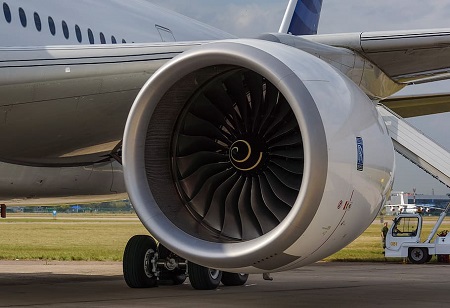Companies that produce
aerospace components for the
aviation sector are constantly looking for new ways to develop manufacturing processes in order to provide their customers with better-quality products and cost-effective solutions while also meeting the high demands and expectations unique to the aerospace sector.
Aerospace components and manufacturing businesses are fast to recognize emerging trends that will reduce manufacturing costs and improve their product offerings in the market as a result of technological improvements and new developments in manufacturing. One of the most important technological advancements in recent years is the application of AI in the aviation sector.
Manufacturing of aerospace components is a multi-billion-dollar sector that calls for advanced technological knowledge. The aircraft sector produces a wide range of components and systems, including aerostructures, engines, equipment, and cabin interiors. Manufacturing of aerospace parts is one of the most strictly regulated industries in the world. The aircraft sector has very strict requirements for the parts it uses, as well as very high standards. This takes a lot of time because there are several trial cycles for parts inspection before they are approved in the industry.
Artificial Intelligence
Automating manual procedures and getting rid of human mistakes are the main goals of AI adoption in the aerospace industry. By identifying fresh patterns and connections, AI, machine learning, and computer vision, among other AI-related technologies, help us understand the data. This helps with a number of tasks, including route optimization, asset usage, and increasing fuel efficiency. AI offers optimal results and manages more difficult problems than people in a lot less time. As a result, the technology supports crucial judgment calls during autonomous flying operations. AI also helps human pilots to design the best possible environment with the advantages of both manned and unmanned maneuverability.
The US-based scaleup
Skydweller Aero creates enduring flight technology with its solar-powered autonomous flight system. It provides autonomous waypoint navigation and directs the aircraft through predetermined places by utilizing AI. In order to successfully maneuver in a variety of weather circumstances, the aircraft is powered by solar energy and has been equipped with cutting-edge climate and data analysis modules. Without human assistance or refueling, it supports
geographic analysis, communications, and emergencies.
Additive Manufacturing
Aerospace non-essential parts, such as interior components with low mechanical stresses, have been the main focus of additive manufacturing. Thanks to developments in metal 3D printing, additive manufacturing has a big impact on the production of aerospace products. It makes it possible for aviation companies to efficiently use low-volume production runs. Moreover, smart materials enable producers to supply stronger and lighter replacements for components made of traditional materials. Also, aerospace businesses can create prototypes quickly by leveraging additive manufacturing, which lowers development barriers and boosts productivity.
Wayland Additive creates 3D printers for the production of aeronautical parts. NeuBeam Metal AM, the company's electron beam additive manufacturing technique, enables users to create durable and high-temperature materials. Due to the ability to create stronger and lighter components, such as turbine blades, structural components, and boosters, flight weight can be decreased. As a result, it minimizes long-term running expenses while reducing fuel consumption and emissions.
Blockchain
In order to protect data at the highest level and increase network resilience to prevent single points of failure, blockchain technology uses public-key encryption. Blockchain facilitates better access to and visibility of supply chain data because the aerospace sector depends on intricate supply lines. In order to improve traceability and tracking, access rights and entitlement management are also automated using blockchain technology. Additionally, blockchain enables secure, traceable, and shareable records across all supply chain participants for aircraft firms. As a result, producers are able to spot inefficiencies and eliminate possible bottlenecks.
A US-based firm - VeriTX creates a platform to control aerospace supply chains. It enables the digitization of the whole supply chain for aerospace companies. Additionally, all acts are documented in digital records built on the blockchain, which enhances process traceability. Companies can use this data to facilitate reverse forensics after incidents, as well as predictive and prescriptive maintenance. The startup lowers operations and maintenance expenses as a result.
Immersive technologies
Immersive technologies are used in aerospace employee training and airborne military operations. They help with the visualization of numerous operations, including air traffic control, weather information, and navigation systems. Engineers and pilots can reduce the effects of complex learning mechanisms with the use of immersive technologies like VR and AR. They also allow operators to observe composite constructions and work in virtual environments. At the same time, AR gives pilots an extra layer of information through helmets or glasses and helps them fly their aircraft more effectively, lowering the likelihood of accidents.
Aries, provides VR-based pilot training programs. Virtu Pilot, a platform developed by the business, blends VR and AI to access interactive content. Trainees can operate cockpit designs, aircraft procedures, and other flying characteristics in the Aries virtual environment. As a result, there are fewer manual errors while training pilots for aerospace companies and assisting students remotely.
The aerospace sector is adopting environmentally friendly technologies to cut carbon emissions. Small satellites support low-cost operations while AI advancements streamline processes and enable autonomous flight. Furthermore, it helps in reducing manufacturing and performance constraints using smart materials and 3D printing. Aerospace advancements ultimately enable swift mobility and economical aerial missions.
